Abstract
Introduction:
Currently, most of continents and countries have its own radiological societies which help to share and update clinical experience and scientific knowledge to make the outcome of routine work become efficacious. Although Vietnam was affected adversely due to war, it also developed fundamentally in radiological field. So as to interact better among radiological societies, we believe that the history and current condition of Vietnamese radiology should be introduced.
Aim:
Thus, in this paper, we aimed to describe the past, current, and future of Vietnamese Society of Radiology and Nuclear medicine.
Methods:
We collected the information about Vietnamese Society of Radiology and Nuclear medicine via internet source and publications.
Results:
Radiological society was established in 1961. Although the society developed successfully during 59 years, there are still some problematic conditions such as gender disparity, insufficiency of human resource and modern modalities.
Conclusion:
With the appearance of Vietnamese society of radiology and nuclear medicine, many doctors and technicians are close together, and Vietnam has an effective chance for radiology to intergrate into actively global radiological field.
Keywords: Vietnamese Society of Radiology and Nuclear Medicine, History, Development
1. INTRODUCTION
On the evening of November 8, 1895, Wilhelm Conrad Röntgen discovered the X-rays effect. The Nobel Prize in Physics 1901 was awarded for Röntgen. He became the father of modern radiology field. From 1920 to now, even though there was no number of people utilizing X-rays, it might be billions (1, 2). Allan M. Cormack and Godfrey N. Hounsfield jointly achieved the Nobel Prize in Physiology or Medicine 1979 with the development of computer-assisted tomography (1, 3). In 2003, Paul C. Lauterbur and Peter Mansfield jointly obtained the Nobel Prize in Physiology or Medicine 2003 with their discoveries concerning magnetic resonance imaging (1, 4). These contributions generated a vigorous development of radiology which led to the debut of many radiological societies throughout the world (1-4).
Radiological Society of North America (RSNA) was founded very early in the 1910s. It also held the first conference in 1915. Dr. Dunnick reported that RSNA currently has over 54,000 members from over 140 countries considered as one of the biggest medical societies in the world. RSNA has five scientific journals: Radiology, Radiology: Artificial Intelligent, Radiology: Cardiothoracic Imaging, Radiology: Imaging Cancer, and RadioGraphics (5). Meanwhile, in the European region, the European Association of Radiology (EAR) was founded in 1962 and the European Congress of Radiology (ECR) was founded in 1967 and carried out congresses every 4 years. Then, in 2005, the European Society of Radiology (ESR) was founded by merging EAR and ECR. ESR has three scientific journals: European Radiology, Insights into imaging, and European Radiology Experimental (6).
Asian-Oceanian Society of Radiology (AOSR) was founded in 1969 and formed by the participation of the some radiological societies including: Australia, New Zealand, Japan, Korea, Hong Kong, Cambodia, Singapore, Malaysia, Taiwan, Thailand, Indonesia, Bangladesh, Sri Lanka, Philippines, India, Western Samoa, Fiji, and Pakistan. In 2019, the Member Societies were 26, including Vietnam Society of Radiology and Nuclear Medicine (7, 8). ASOR was affiliated with the Biomedical Imaging and Intervention Journal. Nevertheless, this journal ceased publication in 2012 (9).
In January 1980, various representatives of the ASEAN countries agreed to form the ASEAN Association of Radiologists (AAR) then renamed as ASEAN Association of Radiology based on meeting outcome of the ASEAN radiologists in Manila, Philippines. AAR society members are Brunei, Indonesia, Malaysia, Philippines, Singapore, Thailand, Cambodia, Lao, Myanmar, and Vietnam (10)
Currently, most of continents and countries have its own radiological societies which help to share and update clinical experience and scientific knowledge to make the outcome of routine work become efficacious. Although Vietnam was affected adversely due to war, it also developed fundamentally in radiological field. So as to interact better among radiological societies, we believe that the history and current condition of Vietnamese radiology should be introduced.
2. AIM
Thus, in this paper, we aimed to describe the past, current, and future of Vietnamese Society of Radiology and Nuclear medicine.
3. FINDINGS
The Evolution of the Society
During the French colonial period, the Vietnamese radiology field was not developed due to the limitation of both modalities and human resource. Dr. Hoang Su working for Hue General Hospital studied abroad in Paris for three years. In 1939, Dr. Hoang Su became the first Vietnamese radiologist receiving a master’s degree in Radiology (Diplôme d’Electro Radiologie). Dr. Hoang Su was selected to become the Head of Department of Medical Physics-Mathematics-Radiology in Hanoi Medical University. In addition, he was also Head of Department of Radiology at Viet Duc Hospital and Deputy Director of Radium Institute (now known as K Hospital). At that time, there was no society of radiology in Vietnam (11, 12).
After the Geneva Accords of 1954, the radiological field in Northern Vietnam was more developed owing to the sponsored equipment from socialist countries, such as the Soviet Union, German Democratic Republic, Hungary, Cuba, Czech, and Slovakia. Many Vietnamese doctors were sent to be trained in radiology and radiation in the socialist countries, especially in the German Democratic Republic and Hungary. With the prolonged experience in radiological field and the change in the condition of war, in 1961, Dr. Hoang Su decided to establish the “Radiology and Physiotherapy Association”. Immediately, the appearance of new society attracted medical doctors, engineers, and technicians in radiology and radiation fields. Dr. Hoang Su was elected to become the first President of the Society (Figure 1) and Dr. Vu Long was selected to become General Secretary (11, 12).
Figure 1. Dr. Hoang Su—the founder and former president of Radiology and Physiotherapy Association.
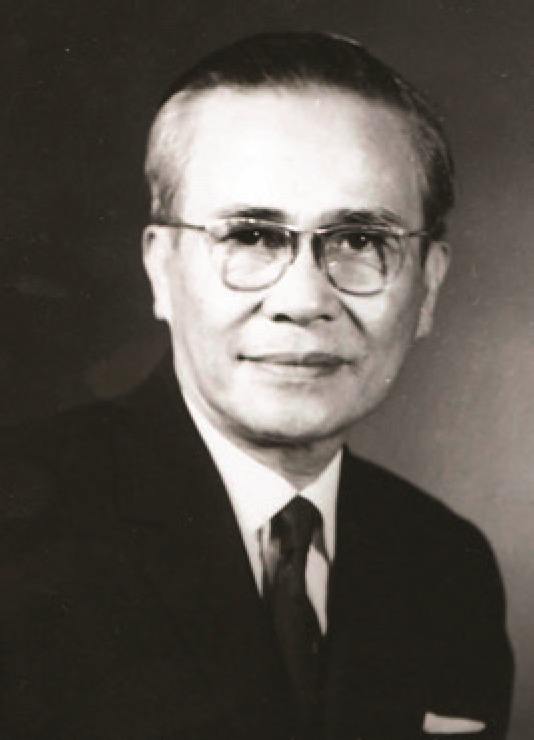
At the National Congress in 1978, the Asminitrative Committee fully agreed to rename the society as “Radiology-Physiotherapy-Medical Radioactivity Association”. During this time, due to illness, Dr. Hoang Su retired from the activities of Society, hence, all the members elected Dr. Dang Van An (Head of Department of Radiology at Bach Mai Hospital) as the President of the Society, Vice Presidents of the Society were Dr. Dang Chu Ky (the representative member of Physiotherapy group) and Dr. Nguyen Cong Thuy (the representative member of Medical Radioactivity group). Dr. Vu Long and Dr. Hoang Duc Kiet were selected as General Secretaries (11, 12).
After 1990, members of Physiotherapy group requested to separate from the society and later joined to the Society of Rehabilitation. From 1990 to 2010, the members of society boomed owing to the avaibility of new equipment including X-ray, Ultrasound, Computer tomography (CT), Magnetic resonance imaging (MRI), and Digital subtraction angiography (DSA). Medical radioactivity field also thrived since the availability of new devices, such as Single-photon emission computed tomography (SPECT) and Positron emission tomography - computed tomography (PET-CT); thus, it then renamed as Nuclear medicine.
Due to the fluctuated situation, at the National conference in 1995, the committee decided to rename the society as “Radiology and Nuclear Medicine Society”. Professor Hoang Ky, Head of the Department of Radiology at Hanoi Medical University and Head of Department of Radiology at Bach Mai Hospital, was elected as President of Society (Figure 2). Vice Presidents of the Society were Associate Professor Vu Long (the representative member of Radiology) and Associate Professor Phan Sy An (the representative member of Nuclear Medicine). Then, Dr. Nguyen Quy Khoang was additionally elected as Vice President of the Society (the representative member of southern region). General Secretary of the Society was Associate Professor Hoang Duc Kiet, Head of Diagnostic imaging department at Viet-Xo Hospital (11, 12).
Figure 2. Prof. Hoang Ky–the former president of Radiology and Nuclear Medicine Society.
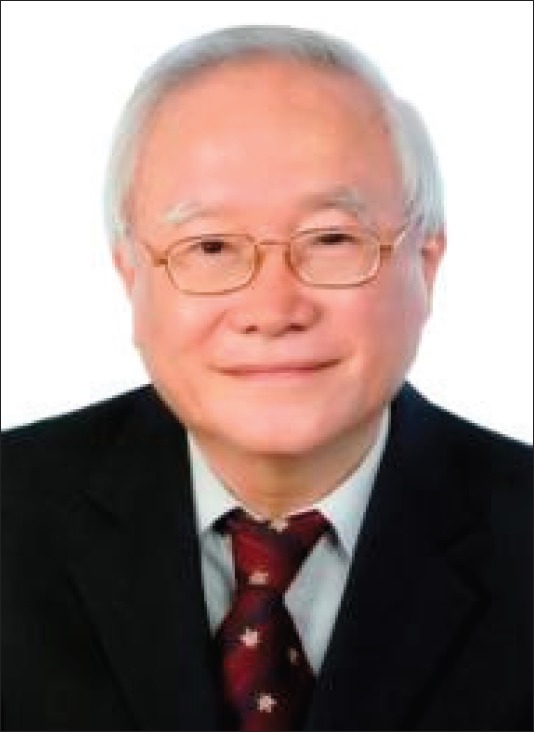
By 1999, the society was renamed as “Vietnamese society of radiology and nuclear medicine” (VSRNM) (Figure 3). Professor Hoang Duc Kiet was elected as President of the Society (Figure 4) and Dr. Pham Minh Thong was selected as General Secretary. Vice Presidents were Associate Professor Vu Long, Associate Professor Phan Sy An, Dr. Nguyen Quy Khoang, and Associate Professor Nguyen Duy Hue (Head of Department of Radiology at Hanoi Medical University). Then, Dr. Nguyen Quy Khoang retired and Associate Professor Pham Ngoc Hoa, head of Diagnostic imaging department at Cho Ray Hospital, was additionally elected as Vice president of society. In 2008, the committee appointed additionally Associate Professor Pham Minh Thong to be Vice President cum General Secretary. In 2010, at the meeting in Hai Phong, the committee agreed to appoint more Deputy General Secretaries in three regions: Dr. Vu Dang Luu (Northern region), Associate Professor Le Trong Khoan (Middle region) and Dr. Vo Tan Duc (Southern region) (11, 12).
Figure 3. Logo of Vietnamese society of radiology and nuclear medicine.
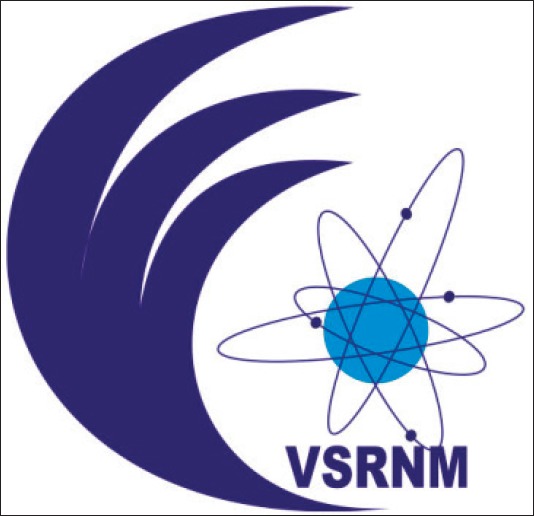
Figure 4. Prof. Hoang Duc Kiet–the former president of Vietnamese society of radiology and nuclear medicine.
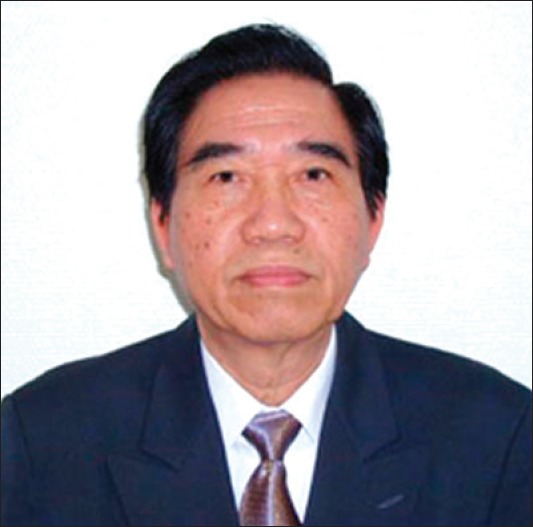
In 2013, all members elected Professor Pham Minh Thong as President of VSRNM (Figure 5). Vice presidents were Associate Professor Pham Ngoc Hoa and Associate Professor Nguyen Duy Hue. Professor Phan Sy An retired and Professor Mai Trong Khoa became new vice president (the representative member of Nuclear medicine group). Other new vice presidents were Associate Professor Hoang Minh Loi (the representative member of middle region) and Associate Professor Nguyen Quoc Dung (Head of Diagnostic imaging department at Huu Nghi Hospital). Dr. Bui Van Giang was selected as General Secretary (11).
Figure 5. Prof. Pham Minh Thong—Current president of Vietnamese society of Radiology and Nuclear medicine.
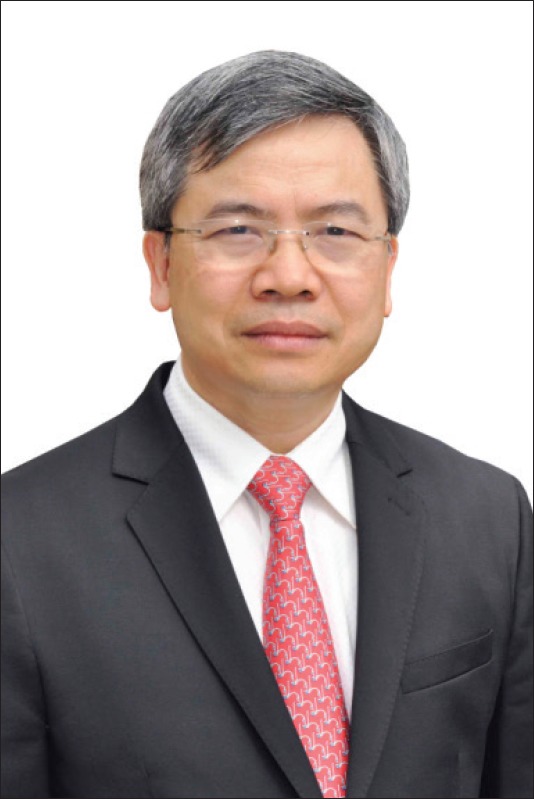
In 2018, at National Congress of the Society in Hanoi, all members continued electing Professor Pham Minh Thong as President. Vice presidents were Professor Mai Trong Khoa, Associate Professor Pham Ngoc Hoa, Associate Professor Nguyen Duy Hue, Associate Professor Hoang Minh Loi, and Associate Professor Nguyen Quoc Dung. Associate Professor Bui Van Giang was additionally elected as Vice president. Associate Professor Vu Dang Luu was selected as General Secretary. Deputy General Secretaries in three regions were Dr. Nguyen Ngoc Trang (Northern region), Associate Professor Le Trong Khoan (Middle region) and Dr. Vo Tan Duc (Southern region) (11).
Currently, VSRNM has had over 1,000 members and opened three subspeciality groups including: Vietnamese society of interventional radiology (in July 2010), Vietnam Association of Radiological Technologists (in August 2013), and Vietnamese society of Ultrasound in Medicine (in August 2016) (11).
Relationship with Other Societies
VSRNM is currently members of many main radiological societies such as: AAR, AOSR, and ESR (6, 7, 8, 10).
The Executive Committee of VSRNM has sent a number of members to participate in Groupe des Radiologistes Enseignants d’Expression Francaise (GREF), of which Associate Professor Vu Long is Vice President and Professor Hoang Duc Kiet is a member of the Executive Committee of GREF. Annually, the French professor came to Vietnam to teach and select young Vietnamese radiologist for a 1-year scholarship in France. From 1994 to 2009, there were 119 radiologists achieved scholarship. In addition, Professor Pham Minh Thong, Associate professor Hoang Minh Loi, and Associate professor Pham Ngoc Hoa currenly join AAR, AOSR, Asian society of Cardiovascular imaging (ASCI), and Asian society of abdominal radiology (ASAR) as executive committee members (7, 10, 13, 14).
VSRNM has organized annually scientific conferences in Hanoi, Ho Chi Minh City and some other cities such as Hai Phong, Hue, Da Nang, Da Lat, Vung Tau, and Nha Trang. Each meeting has abundant scientific reports and educational exibitions from both domestic members and foreign experts. VSRNM organized two French-Vietnamese Diagnostic Imaging Conferences in conjunction with annual congresses by 1999 and 2003, in which many French professors presented scientific and review reports to update knowledge for domestic members. In addition, in September 2008, VSRNM cooperated with AAR to hold 14th Asean association of radiology conference in Hanoi (12). In 2011, VSRNM organized the Third Frence-Vietnamese Conference in Hue. In 2019, VSRNM coordinated with ASAR to hold lecture course at Hanoi (13). In 2020, at Da Nang city, The society will conjoin with ASCI to hold the 14th conference (14).
Educations and Publications
In terms of education, there are two types of training course. One type is managed by Ministry of Health, which focuses more on clinical practice. First, oriented specialists are trained with ultrasonography and X-ray within 9 months. Nonetheless, from 2019 it was contemporarily discontinued. Specialists at level 1 are trained for 2 years after finishing oriented education course. By 2022, it will become specialist program. Training of specialists at level 2 (2 years) is reserved for specialist level 1 or master of degree. This type will be completed by a thesis. By 2022, it will become expert program. Another type is managed by Ministry of Education and Training. There are also two levels of course (Master course in 2 years and then Doctor of Philosophy in 3 years). To graduate, both Master degree and PhD candidates have to complete their own thesis. Currently, only Hanoi Medical University, Hue University of Medicine and Pharmarcy, and Research Institute of 108 Military Central Hospital have Doctor of Philosophy in Radiology and Nuclear medicine program. Most of Medical universities have many learning courses such as: Master degree, Specialist level I, and Specialist level II in Radiology. In Vietnam, some medical universities also have residency program in radiology for medical student to be able to learn immediately after graduating from university. Hanoi Medical University early started residency training course in radiology from 1978. By 2010, there were 43 recidency doctors graduating under this program. By 2006, University of Medicine and Pharmacy at Ho Chi Minh city and Hue University of Medicine and Pharmacy launched this training program. Later, in 2018, Pham Ngoc Thach University of Medicine initiated this program (11, 12).
Prior to 2009, there were only three colleges in Hai Duong, Da Nang, and Ho Chi Minh City offering radiological technologist program. Thus, radiology and nuclear medicine field critically lack radiological technicians. Fortunately, today, many medical universities offer this course; therefore, the insufficiency of radiological technologists has been partially resolved (11, 12).
Nuclear medicine physicians are independently educated and also complied with these levels as described above. Presently, there are only two training centers for this specialty including Military Medical University and Hanoi Medical University (11, 12). In terms of publication, after establishing Society in 1961, the committee decided to publish four issues per year on Vietnamese radiology journal in 1962 and 1963. Then, the journal published two issues per year up to 1984. Due to the limited condition in pressing publication, prior to 1990, journal could not publish figures in content. Since 2010, VSRNM has published consecutively the Vietnamese journal of Radiology with four issues per year. In 2019, executive staff of journal decided to publish one special English issue and three Vietnamese issues per year (11, 12).
4. DISCUSSION
Vietnam, an ASEAN country with an area of 331,699 km2 and a population of 95.5 million in 2018, is currently classified as developing country with low-middle income. In 2009, the number of physicians was about 6.25 per 10,000 people. The number of hospital beds was 25 per 10,000 people meanwhile the numbers of public hospital beds was 19 per 10,000 people. Health care expenditure per capita was about 27 USD per year (12). Prior to 1975, when the country was splited into two regions: Northern region and Southern region, activities of the Vietnam Radiology Society were localized only in Northern region. Since 1975, activities of Society have been extended to the whole country. During 5-decades development, the Society changed its name four times: Radiology and Physiotherapy Association (1961), Radiology-Physiotherapy-Medical Radioactivity Association (1978), Radiology and Nuclear Medicine Society (1995), and Vietnamese society of Radiology and Nuclear medicine (1999) (11, 12).
Vietnamese radiology was truly formed after the end of the war against French invasion in 1954. Nonetheless, it was not well developing due to the war against the United states of America ultil 1975. From 1954 to 1974, only big hospitals in big cities, including Saigon, Hue, and Hanoi owned few X-ray modalities for diagnostic purposes; even though, in 1972, computed tomography became more and more popular throughout the world. In 1991, the first computed tomography scanner was installed in Viet-Xo Hospital, Hanoi, in which in 1997, the first magnetic resonance imaging system was also launched. In 1971, Nuclear medicine field was just started at Cho Ray hospital (Saigon) and Bach Mai hospital (Hanoi). After 1975, together with the development of community healthcare, Vietnamese radiology florished efficaciously (11, 12).
In 2009, Hoang Duc Kiet reported that almost all district hospitals possessed X-ray and ultrasound modalites. About 80% of the hospitals in province and cities owned 174 CT systems, 51 MRI systems, and 21 DSA systems. Regarding nuclear medicine modalities, 25 provincial hospitals and all central hospitals had SPECT and four PET-CT systems throughout Vietnam. Furthermore, there were many learning programs for both radiologists and technologists to update and practice, which reduce the insufficiency of human resource of radiology and nuclear medicine fields in Vietnam by 1960s. Thus, from 1961 to 2009, there was a big improvement from both available modalities and human resource in this field. Therefore, with these reasons, the appearance of Vietnamese society of Radiology in 1961 became very reasonable to cope with the development of radiology field in the world (6, 8, 10, 12).
Eventhough, there are an effective development of Vietnamese radiological field, Vietnamese radiological society still faced some problematic conditions. Firstly, the availability of CT and MRI modalities throughout Vietnam is relatively limited; therefore, the human resource working effectively with CT and MRI is still lacking. Secondly, the male diagnostic and interventional radiologists were more predominant than the female; thus it results in the gender disparity among the Vietnamese radiological society. The advanced Vietnamese radiologists worked mainly in big cities like Hochiminh, Danang, and Hanoi; therefore, there is a significant different in human resource level among the Vietnamese provinces. Thirdly, the Vietnamese interventional radiologists are severely deficient despite the acute necessity of interventional radiology field.
From now to 2024, the Society aims to improve the national level of radiology and nuclear medicine with six main tasks: (1) Performing Continuous Medical Education Program for radiologists and technologists of every region; (2) Unifing the recommendative protocol and course throughout the medical universities, clinical centers, and subspecialities societies in many regions; (3) Coordinating with regional radiological associations such as AAR and AOSR and experts from developed countries such as Korea, Japan, France, USA… to update knowledge and to share clinical experience; (4) Holding the annual conference in conjuction with another specific meeting of ASAR, ASCI,…; (5) Strengthening the relationship with Korean society of Radiology, Asean Association of Radiology, AOSR, and GREF-Groupe de Radiologists Enseignements d’Expression Francaise in the direction of subspecializing the diagnostic radiology and interventional radiology of body systems; and (6) Supporting members to perform more scientific research, international publications, and oral presentations in English.
5. CONCLUSION
With the appearance of Vietnamese society of radiology and nuclear medicine, many doctors and technicians are close together. In terms of domestic activities of the Society, such as training, education, meeting, and conference, many radiologists and technologists can share knowledge and update information related to this field. In terms of international activities of the Society, many international conferences in conjunction with annual conference were and will be hold, which opens an effective chance for Vietnamese radiology to intergrate into actively global radiological field.
Acknowledgment:
The authors are grateful to Professor Hoang Duc Kiet, Vietnamese society of Radiology and Nuclear medicine, Asean Association of Radiology, and Asian-Oceanian Society of Radiology to their general support and technical help.
Declaration of patient consent:
Not applicable.
Author’s contribution:
Each author gave substantial contribution in acquisition, analysis and data interpretation. Each author had a part in preparing article for drafting and revising it critically for important intellectual content. Each author gave final approval of the version to be published and agreed to be accountable for all aspects of the work in ensuring that questions related to the accuracy or integrity of any part of the work are appropriately investigated and resolved.
Conflicts of interest:
There are no conflicts of interest to declare.
Financial support and sponsorship:
Nil.
REFERENCES
- 1.Masic I. Nobel Prize Winners in Medicine and Physiology and their Contribution to Development of Modern Medicine. Mater Sociomed. 2008;20(4):242–253. [Google Scholar]
- 2.Wilhelm Conrad Röntgen [Internet] 2019. [25 Nov 2019]. Available via https://www.nobelprize.org/prizes/physics/1901/rontgen/biographical/
- 3.Masic I. Five Periods in Development of Medical Informatics. Acta Inform Med. 2014 Feb;22(1):44–48. doi: 10.5455/aim.2014.22.44-48. [DOI] [PMC free article] [PubMed] [Google Scholar]
- 4.The Nobel Prize in Physiology or Medicine 2003 [Internet] 2019. [25 November 2019]. Available via https://www.nobelprize.org/prizes/medicine/2003/summary/
- 5.Histories of RSNA and Radiology. Intertwined. 2014. [25 November 2019]. [Internet], Available via https://rsna2014.rsna.org/dailybulletin/index.cfm?pg=14Mon93.
- 6.European society of Radiology [Internet] 2019. [25 November 2019]. Available via https://www.myesr.org/
- 7.Asian Oceanian society of Radiology [Internet] 2019. [25 November 2019]. Available from http://theaosr.org/
- 8.Leong LL, Hare WS, Thomson KR. The History of AOSR: Asian Oceanian Society of Radiology. Biomed Imaging Interv J. 2011;7(4):e30. doi: 10.2349/biij.7.4.e30. PMid: 22970057 PMCid: PMC3432219. [DOI] [PMC free article] [PubMed] [Google Scholar]
- 9.Biomedical imaging and intervention journal [Internet] 2019. [25 November 2019]. Available via https://www.ncbi.nlm.nih.gov/pmc/journals/1203/
- 10.Asean Association of Radiology [Internet] 2019. [25 November 2019]. Available from http://www.aseanradiology.org/home.php.
- 11.Vietnamese society of radiology and nuclear medicine [Internet] 2019. [25 November 2019]. Available via http://radiology.com.vn/
- 12.Kiet H. State and future of radiology and nuclear medicine in Vietnam. Biomed Imaging Interv J. 2009;5(4):e34. doi: 10.2349/biij.5.4.e34. ; PMid:21610998 PMCid:PMC3097725. [DOI] [PMC free article] [PubMed] [Google Scholar]
- 13.Asian society of abdominal radiology [Internet] 2019. [25 November 2019]. Available via http://www.abdominalradiology-asia.org/meeting.
- 14.Asian society of cardiovascular imaging [Internet] 2019. [25 November 2019]. Available from http://asci-2020.org/


